Charles-Henri Sanson, Royal Executioner
There’s nothing that epitomises the attitudes of pre-Revolutionary France quite like the job of executioner. The men in this job served the royal will, dealing out death and torture as decreed by the upper classes. Officially they were esteemed for this role. Unofficially they were despised for it. The aristocrats saw them as tools to be deployed against the lower classes to keep them in line, but they also saw them as members of those lower orders. And so, when the Revolution came, an executioner like Charles-Henri Sanson would prove to be a double-edged tool.
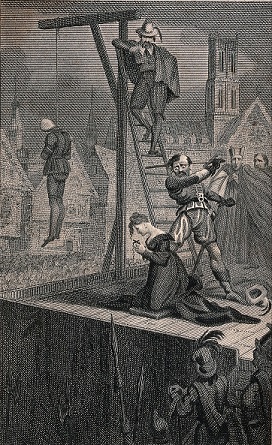
Like the Pierrepoints, the Sansons made executions a family trade. This wasn’t really a coincidence. It was difficult to get men to join the ranks of les Bourreaux, and so the law said that if an executioner could not find an apprentice then his son or son-in-law would have to take their place. The first of them to take up the trade was an impoverished nobleman named Charles Sanson de Longval. He married the daughter of an executioner, either for love (family legend said that she was his nurse after an injury) or for her father’s fortune. He must have had a reason, at any rate, as the stigma for marrying into her family was exceptional, as was the price. Since her father had no son then the law obligated Charles to become his father-in-law’s apprentice. Reportedly he fainted at the first execution he assisted in, but he soon toughened to the trade. The most notorious execution he carried out was that of Angélique-Nicole Carlier Tiquet, a noblewoman who was convicted of hiring men to kill her husband. That husband, who had survived the attempt, was one of those begging for mercy for her from the king. There was little proof of her being behind the attack, and besides it had not succeeded. But an attack like that was an attack on the fabric of patriarchal society, and no mercy was forthcoming. Her alleged accomplice was a commoner, and so he was hanged. Angélique-Nicole was a noble, and so she had the “privilege” of being beheaded. It took three strikes of the executioner’s sword from Charles Sanson to sever her head from her body.
The daughter who Charles married died giving birth to their son, also named Charles. This Charles grew up to take on his father’s job, and married a formidable woman named Anne-Marthe. Charles junior died in 1726, leaving behind a seven year old son named Charles-Jean-Baptiste and a five year old son named Nicolas-Charles-Gabriel. Officially Charles-Jean-Baptiste was now the state executioner for Paris, a lucrative position and one that Anne-Marthe Sanson had no intention of giving up. So the young boy grew up on the scaffold, standing by to give legitimacy while his “assistants” carried out the execution. Eventually both Charles-Jean-Baptiste and Nicolas-Charles-Gabriel would grow up to wield the blade themselves. Charles-Jean-Baptiste had seven sons, all of whom eventually became executioners. The eldest, born in 1739, was Charles-Henri Sanson.
Charles-Henri learned at an early age that his family trade was one held in contempt by the world at large. By common arrangement it was never discussed by them at home, and the Sansons only ever spoke of “the work”. In order to safeguard him from the disgrace of “the work”, young Charles-Henri was enrolled anonymously at a fairly prestigious school run by the Sisters of Providence of Rouen. There he studied medicine, hoping to be able to escape his family trade. Unfortunately at the age of 14 his father was recognised by the father of another student, and the class-conscious parents immediately raised enough of a scandal that Charles-Henri was forced to drop out. He completed his education with a private tutor. While he was doing so his father suffered a stroke that left him unable to carry out his duties and he had to retire. When Charles-Henri turned sixteen he was told by his grandmother Anne-Marthe that he would take up his father’s job. His own desire to save lives rather than take them was brushed aside.

Initially, like his father, Charles-Henri had to leave the actual executions to “assistants”. In 1757 he himself played assistant to one of the goriest executions of the 18th century, on a man who tried to do what Charles-Henri would become infamous for – regicide. Robert-François Damiens was an unemployed ex-servant who seems to have been suffering from some form of mental illness. He blamed Louis XV for Jansenism (a sect of Catholicism) having been ruled heretical, and so when the King was boarding his carriage he ran past his bodyguards and stabbed him with a pen-knife. It was only a minor wound, but it terrified the “Sun King” who was convinced that he was about to die. That terror may have been why he decided to visit on the hapless would-be assassin a fate of the sort that had not been visited on any Frenchman in over a century.
On the morning of the 28th March 1757 Robert-François Damiens was taken to a scaffold in the center of Paris. There a massive crowd (which included the infamous Casanova) were witness to him being subjected to literally medieval tortures. The official executioner was Charles-Henri’s uncle, Nicolas-Charles-Gabriel Sanson. Charles-Henri and several others assisted. From the outside it was terrifying, but from the inside it was almost farcical. France’s last regicide had been in 1610, and the executioners had no real experience with how to carry out the punishments that had been decreed. First his flesh was “torn with pincers”, which had to be specially crafted for the occasion and which turned out not to be able to get the grip they quite needed. Then he was “burned on the hand which held the weapon”, but the sulphur simply scorched him. That’s not to say that it wasn’t also painful, however, and Damiens’ screams echoed around the plaza. The worst was in the final punishment, which was for him to have his limbs torn off by horses. However the horses proved not to be strong enough, and after an hour of attempts two more horses were added. Still they were not strong enough. The executioners had not known that they needed to sever his tendons before the punishment. Eventually after one of the horses collapsed, Nicolas-Charles-Gabriel and one of the other assistants were forced to use knives to cut Damiens up. The remains were then burned.
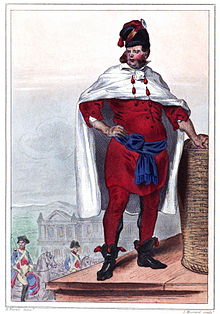
Nicolas-Charles-Gabriel retired after the Damiens execution, it apparently being one step too far for him. Charles-Henri, on the other hand, seems to have had the opposite reaction. Far from putting him off his trade, the gruesome event inured him to it. No other job could be so bad after it. That wasn’t to say it was smooth sailing. One notable incident came in 1766 when an old friend of his father’s was the subject of “the work”. Thomas Arthur, the comte de Lally, was a French nobleman descended from a Jacobite exile who had stayed in France when Charles II returned home. One night in 1731 the young count had been wandering through Paris when he passed a party at the Sanson household. He and his friends had joined in, and Thomas had been fascinated to find out whose house it was. He had asked Charles-Jean-Baptiste to show him his tools, and had made him promise that if Thomas was ever on the scaffold he would receive a quick death. Thirty-five years later that grim jest became reality. Thomas became governor-general of French India, and was in charge when the British drove the French out. He was captured, and while a prisoner in London found out that his enemies in France were calling for him to be tried for treason. He returned on parole to defend himself, but was found guilty in a trial heavily weighted against him. Charles-Jean-Baptiste came out of retirement to supervise the execution, as a gesture of respect. The legend is that with his father’s eyes on him Charles-Henri’s nerves got the best of him and he fumbled the stroke of his sword. Charles-Jean-Baptise leapt up and grabbed it, finishing Thomas off with a single blow.
Thomas Arthur and Madame Tiquet were both high-born, which is why they rated decapitation as their method of execution. Most other criminals were hanged, though those whose crimes were considered more heinous rated more elaborate forms of death. Heretics were burned, counterfeiters were boiled alive and murderers faced being “broken on the wheel”. They were lashed to a circular wheel and had their limbs broken with an iron bar before being finished off. As the more compassionate ideals of the Enlightenment began to emerge, all of these methods of death began to seem cruel and unusual. Some considered the death penalty itself unnecessary, but they were few and far between. But the argument for a more efficient method of execution soon found an unlikely champion in the form of the State Executioner, Charles-Henri Sanson.

Leading the charge was Joseph-Ignace Guillotin, a doctor who had been elected as one of the deputies for Paris to the General Assembly in 1789. Guillotin was actually against the death penalty on principal, but thought that the first step would be to make the process as painless as possible. He proposed a motion that all death sentences should be decapitations carried out by mechanical means. The motion was passed. The decapitation machine was originally called a “louisette”, after its designer Antoine Louis. However (to his later regret) Guillotin made a joke in a follow-up speech about how “with my machine, I cut off your head in the twinkling of an eye, and you never feel it!” The joke became the basis for a popular song, and the machine became eternally associated with him. His family later even changed their name, to disassociate themselves from this new development – the guillotine.
Charles-Henri Sanson was a huge advocate of the guillotine, though his motives may have been slightly selfish. Not only would it make his job a lot easier, but it would also mean that he would no longer need to maintain a vast array of execution tools. He took on the job of testing the prototype, starting with straw bales. These were followed by living sheep and then human corpses. The machine was declared a success and the first official guillotine was created by Tobias Schmidt, a maker of musical instruments who was one of Charles-Henri’s closest friends. The machine first saw use in April of 1792 to execute a man who had murdered someone in the course of a mugging. It was ready just in time. Charles-Henri Sanson was about to get a lot busier.
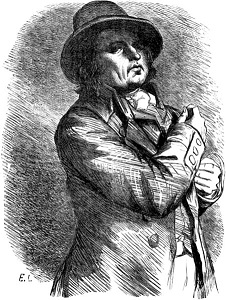
At first glance, you might have expected the French Revolution to have been bad news for Charles-Henri. Here was a man who dealt out death on behalf of the upper classes, after all. He was well-paid; enough that his fancy green coats actually set a fashion at court. And he was descended from a noble family. But the Revolution was not the sudden violent upheaval that popular imagination portrays. It began with social reform, and it was middle-class artisans like the Sansons who were at the heart of it. As it progressed, Charles-Henri progressed with it. Under the Ancien Regime he was a pariah and an outcast, but in the new order he was “Citizen Sanson”, a valued state official. The arrival of the guillotine transformed him from a butcher into an engineer, making his trade a lot more respectable. But this new prestige came at a price. Charles-Henri was a servant of the state, and the new state expected him to obey. So when it sentenced King Louis XVI to death, it was Charles-Henri who was to carry out the sentence.
It was no light thing to execute a king. When King Charles of England was executed, his executioner’s identity was a closely held secret. And in validation of that secrecy, after the Restoration every member of Parliament who had voted for his execution was tracked down and themselves executed in far more tortuous fashion. Charles’ executioner had been either Irish or Scottish, too. [1] But the principles of the Republic meant that it was important to them that Louis be executed by a Frenchman and in full compliance with the law. Charles-Henri didn’t really want to do it. He knew it would potentially put his family in danger as a result. But he felt he had no choice, and he was probably right.
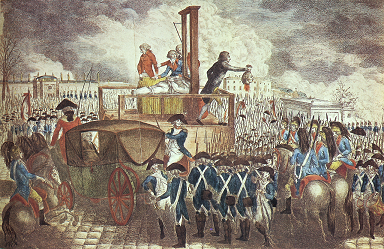
The execution took place in January of 1793. It was a gloomy damp morning, and reportedly the King was silent except for some prayers on his two-hour coach ride to the scaffold. Once he arrived there was some confusion, which led to a rumour that the king had tried to fight his way free. This wasn’t true though, and apparently was due to the king’s protests when he found out that his hands were to be bound with a length of rope. His confessor persuaded him (by pointing out that Jesus had also been bound), and Charles-Henri replaced the plebian rope with a silk handkerchief. He was also reluctant to let Charles-Henri cut his hair, but relented. The king addressed the crowd, declaring his innocence of his crimes and his hope that no harm would come of his death. He would have spoken more, but a drum roll (arranged in advance) cut him off. So he took his position in the machine, and the blade came down. Some accounts have it that the blade did not severe his head cleanly and that Charles-Henri had to put his weight on the blade to get it through, though the executioner himself naturally denied it. With that done, he held the king’s head up for the crowd, who surged forward to dip their handkerchiefs in the blood that fell from it.
That same blood now bound Charles-Henri Sanson to the Revolution, which had much more need of his services as the frenzy of execution known as “the Reign of Terror” went into full swing. In the first half of 1793 the Committee of Public Safety took power, and over the course of the year the number of those sent to the guillotine grew larger and larger. The victims were not just nobles left over from the Revolution, now they included the political opponents of Robespierre and his cronies. One of those cronies was George Danton, but he and his supporters fell from grace and they too were fed into the ravenous maw of Madame Guillotine. Twenty thousand people died in this period, most of them out in the cities like Lyon and Nantes that tried to rebel against this madness. It only ended when it claimed the life of the man who had masterminded it. In July 1794 Maximilian Robespierre, the leader of the Committee of Public Safety, became the victim of a coup. His jaw was broken during his arrest, and when Charles-Henri removed the bandage from it before putting him into the guillotine he let out a blood-curling scream of pain; pain that was almost immediately cut short.
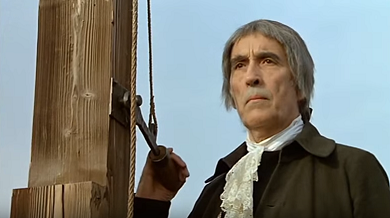
The end of Robespierre led to the end of the Terror, as the new government sought to disassociate themselves from the excesses of the previous regime. The death penalty remained, however, and “th work” continued. Charles-Henri Sanson retired in 1795, handing over his position to his younger son Henri. Both of Charles-Henri’s sons had followed into his trade but the eldest and original heir, Gabriel, had died in a workplace accident several years earlier. While holding a head up to display it to the eager crowd he had slipped on the pooled blood and fallen from the scaffold. Like his father, Henri had shed blood for the Revolution, as he had been the one who executed Queen Marie-Antoinette. Charles-Henri was in attendance and the story is that Marie-Antoinette accidentally stood on his foot as she went up to the scaffold, to her embarrassment.
In his retirement Charles-Henri retained a macabre celebrity. One famous story is that he was visited by Emperor Napoleon Bonaparte. Napoleon asked him if the people he had killed as an executioner weighed on his conscience. Charles-Henri joked:
If emperors, kings, and dictators can sleep well, why shouldn’t an executioner?
Napoleon’s response was not recorded. Charles-Henri continued in his retirement until 1806, when his ill-health caught up with him and he died. Henri continued as the High Executioner of Paris until 1839, when he was replaced by his own son Henri-Clement. Henri-Clement was the last Sanson to be an executioner, and the story of how he lost his job is somewhat sordid. He was always a spendthrift, and deep in debt he wound up either selling or pawning his guillotine, which dated back to Charles-Henri’s days. There’s probably no truth to the story that he tried to ride it out by performing his next execution with an axe, but it is true that he was fired for misusing municipal property. The Sanson family fled the scandal by moving to Belgium, where they changed their name to “Samson”, and finally managed to leave the ranks of les Bourreaux. That was the end of the tale of France’s most famous family of executioners.
Images via wikimedia except where stated.
[1] There were three men who were picked as executioner, and only they knew which one wielded the axe. Famously one went to live in Galway afterwards where he used the money to establish a pub, amusingly titled “The King’s Head”.
